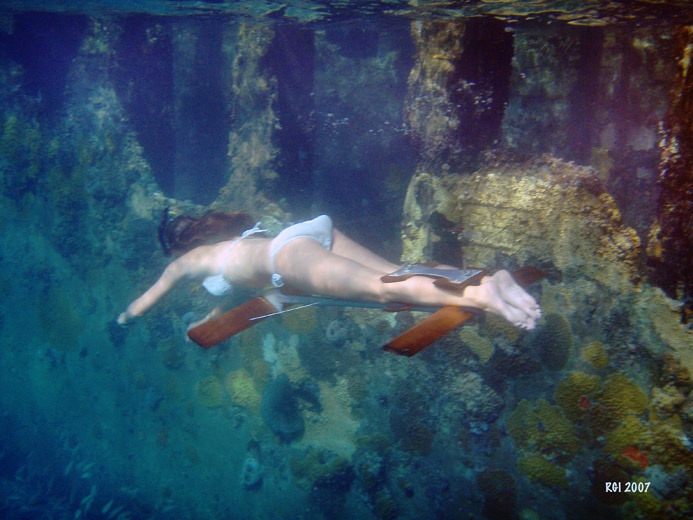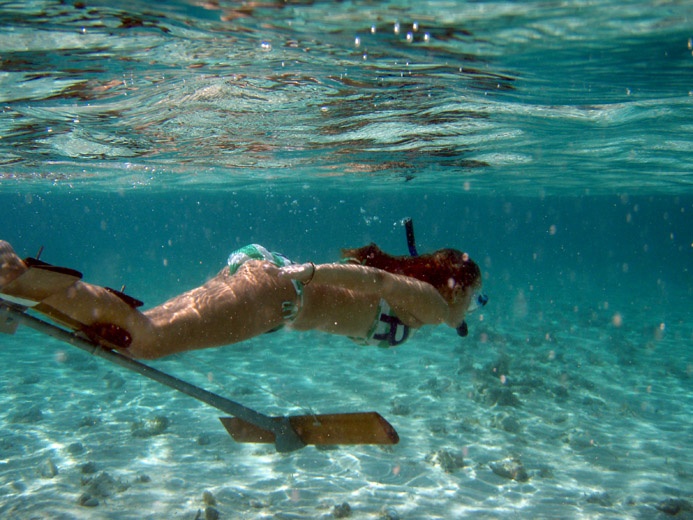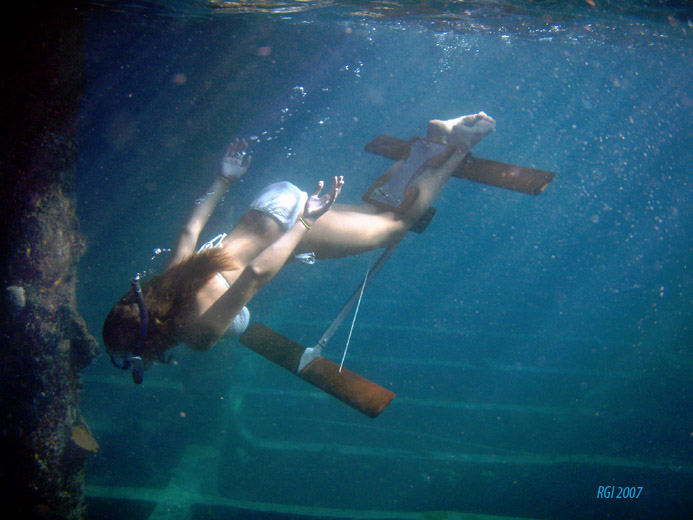On the inverted question, competitive freestyle swimmers have discovered that they are faster underwater, dolphin kicking, inverted. Once this became widespread, the rules were changed to require that swimmers surface not more than 15 feet from the wall after the turn, otherwise, short distance freestyle events would have turned into underwater dolphin kick only.
Interesting observations about dolphin kicking competitive swimmers. You would think body orientation during the kick wouldn't be that significant but it certainly feels that way.
It is not really the body position that makes the difference - that is pretty unimportant in the quasi-weightless environment. It is the proximity of a material threshold (surface, wall, pool bottom) that is important. When a fin moves against a barrier (as I wrote: surface, wall, or a pool bottom), the water pushed away with the fin, unlike in free space in deep water, is restricted fro two sides, and hence instead of being pushed away in an angle close to 90°, is rather forced backward, and propulses so the swimmer similarly like a burning fuel in a rocket reactor. Well, the matter is little bit more complicated, because the positive propulsion effect is reduced by higher turbulences, friction, and suction effect, but generally swimming close (in optimal distance) to any surface while propulsing against it, gives an advantage against swimming in a free space.
Now, once you realize the opposing surface gives you an advantage, swimming face to it is indeed better for two reasons:
- You can much better control your distance to the surface/bottom/wall when looking at it, and keeping it so optimal, avoiding touching the surface, or getting too close which increases suction effects and turbulences.
- Due to the physiology, I believe the forward kick is little bit stronger and faster than the reverse kick. Hence when you swim face to any surface, you use the stronger part of the kick to push water against the surface which gives more propulsion than the reverse kick moving water into free space.
However, although this is valid for swimming with conventional fins and monofins, I believe that due to the use of the hydrofoils, and due to their position, the propulsion is more symmetric with the Aqueon, hence I would not expect the same advantage as at fin swimmers. On the other hand, it is true that the pair of Aqueon hydrofoils that is under the breast is much closer to the surface if you swim face to it than vice versa, so maybe finally it could give some extra speed (though I wouldn't expect any important difference).
Still, for real diving (I mean being deep), the body position is absolutely unimportant (unless you can sink or swim along some wall).
If you are interested about fluid mechanics and biomechanics related to swimming and fin swimming, there are some documents in my Freediving Media Base:
documents hydrodynamics @ APNEA.cz In this case, I especially recommend the one titled Swimming Biomechanics - it includes several studies of monofin swimmers and also many other references for those who are really interested in that matter.





